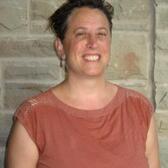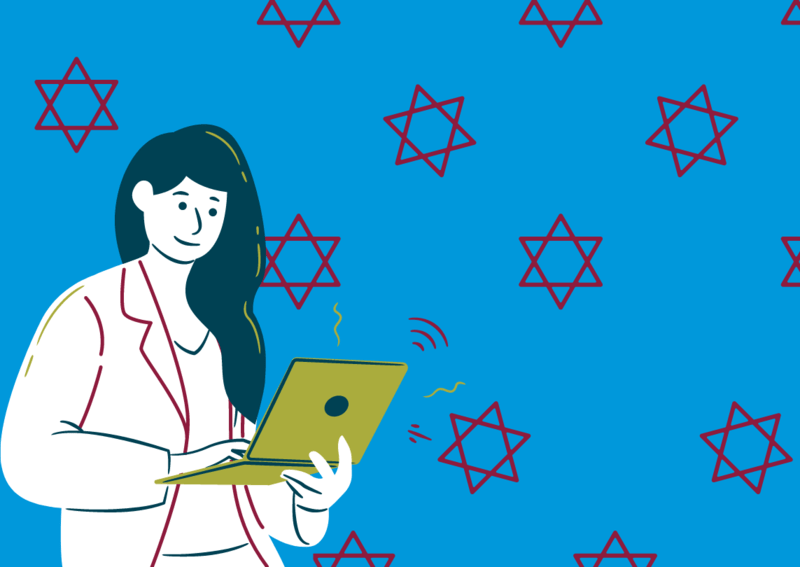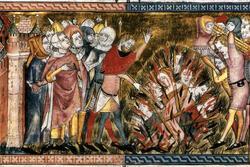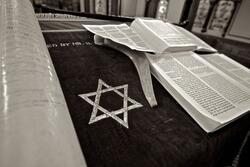The High Holidays Go Virtual: Three Rabbis on Jewish Ritual during a Pandemic
During the pandemic, spiritual leaders like rabbis have played an important role in responding to the needs of the Jewish community. To find out more about what that looks like, I spoke to Rabbi Rachel Dvash Schoenfeld, at the congregation B’nei Tikvah-Beth Israel in New Jersey, Rabbi Elyse Goldstein at City Shul in Toronto, Canada, and Rabbi Claudia Kreiman at Temple Beth Zion in Brookline, Massachusetts about their communities’ needs, their changed roles as spiritual leaders, adaptations to religious life, and plans for the upcoming High Holidays.
What kinds of issues are your congregants struggling with right now: spiritually, physically, mentally, and emotionally?
Rabbi Schoenfeld: People are desperate for connection and community. Depression and loneliness has increased, and religion is an antidote to that.
Rabbi Goldstein: There has been a lot of loss and grief such as loss of surety and stability, economic and business losses, people who can’t see their family because they live in the States.
Rabbi Kreiman: We have been checking in regularly with the most vulnerable, such as the elderly and those who can’t go out and buy groceries.
How has your role as a rabbi / spiritual leader shifted during the pandemic?
Rabbi Goldstein: It has become very important to do more pastoral counseling. Also, I’ve been going to a lot of webinars and thinking about how to best use technology to accomplish communal goals and create the most interactive, spiritual experience possible.
Rabbi Schoenfeld: Synagogues—and religious communities more broadly—are getting more participation now than ever before. I see my role as building community and also encouraging congregants to support one another, even if we don’t all agree politically.
Rabbi Kreiman: I am doing what I always did as a rabbi: responding to the needs of our community, especially when there is a crisis. I help people who are suffering and are lonely.
What have you been doing for outreach and to connect with people? How has your synagogue adapted during the pandemic?
Rabbi Schoenfeld: We have been reaching out to the community. We call every member. We have regular Zoom gatherings, and we always include the Misheberach prayer for healing.
Rabbi Goldstein: We have been calling each member of the congregation. Our goal is to have a very interactive Zoom service. We mute and unmute people who raise their hands and give them a chance to speak. We do Torah study in break out rooms. We have synchronous services. We don’t think of anything as virtual. We still have aliyot and put the Torah reading up on the screen so it looks the way it does in the Torah scroll.
Rabbi Kreiman: We have a daily prayer and check in we call it Boker Tov TBZ. Before we had services once a week, not every day. There is a network of people who help those who are the most vulnerable—buying groceries, etc. Social justice is important to us. The issue of racial justice has become a focus for us at this time, and we have been attending protests and virtual events to demonstrate our support.
What will High Holiday services look like this year for your congregation? How are you and your colleagues preparing for them?
Rabbi Goldstein: Most of the services will be virtual, but we will have a live, in-person Ne’ila (end of Yom Kippur service) that will include an opportunity to go up to the ark and have some private time with the Torah. We will also have an end of Rosh Hashanah live shofar blowing ceremony in a park that is a collaboration amongst three synagogues. There will also be an opportunity for people to have small creative Tashlikh ceremonies in their backyards with up to ten people.
Rabbi Kreiman: Most of it will be virtual. I have to let go of some of the expectations that one has with the services. We have to balance needs, such as making it interactive and aesthetically beautiful, while making it meaningful online.
Has your congregation explored the possibility of in-person gatherings (eg: outdoor services)? Is this something you are in favor of?
Rabbi Goldstein: At City Shul, we [won’t go] back into the space until health regulations say it’s truly safe. The problem is singing, and we don’t want to sing with masks. We think it’s problematic to tell people they can have an in-person bar mitzvah and then change it. We don't do private B'nei Mitzvot; we always invite the whole congregation, and since we can't have such large gatherings, we won't do them in the sanctuary right now. Zoom is the great equalizer.
Rabbi Schoenfeld: We have also had in-person gatherings capped at 10 people. That has been controversial. We are open on Shabbat for gatherings. The past Shabbat, we had a bar mitzvah and opened up the synagogue to 25 people.
Rabbi Kreiman: As of now we are planning three B’nei Mitzvot here in the sanctuary with up to 25 people. The sanctuary is very large and holds 400 people, and there are no pews, so the chairs can be completely separate and everyone will be masked. We had an outdoor Kabbalat Shabbat at the Farm of the Gann Academy High school with 50 people in person and many people joining in zoom. It was such a success—as people loved being together and having a hybrid program worked—that we are planning another one.
A recent article in Tablet discussed how Judaism has changed during other time periods after pandemics or other major traumas (such as the Holocaust). Judaism is already adapting to this current moment. In what ways? What changes do you see? Is this something rabbis / lay leaders are talking about?
Rabbi Schoenfeld [speaking at the time of Tisha B’Av]: I have been thinking about the destruction of the Temple, and how at that time, Judaism changed from a sacrificial religion to a diffuse religion. I am sure there will be changes due to the pandemic and how we practice Judaism.
Rabbi Goldstein: The need to be bold, the need to take tradition and readapt its form without losing its content. The pandemic has caused rabbis to ask these questions: How can we adapt to a non-three-dimensional reality? As a Reform Movement, we are open to change, but you have to think strategically and ask, “What is the goal of this experience for people?”
Rabbi Kreiman: I have had to stretch myself in some ways right now, such as using technology on Shabbat and celebrating holidays over Zoom. This was something I wouldn’t do before. After [the pandemic], we have to ensure that we go back to what it means to be a community in person. We will have to decide what will stay and what new boundaries we will create.







